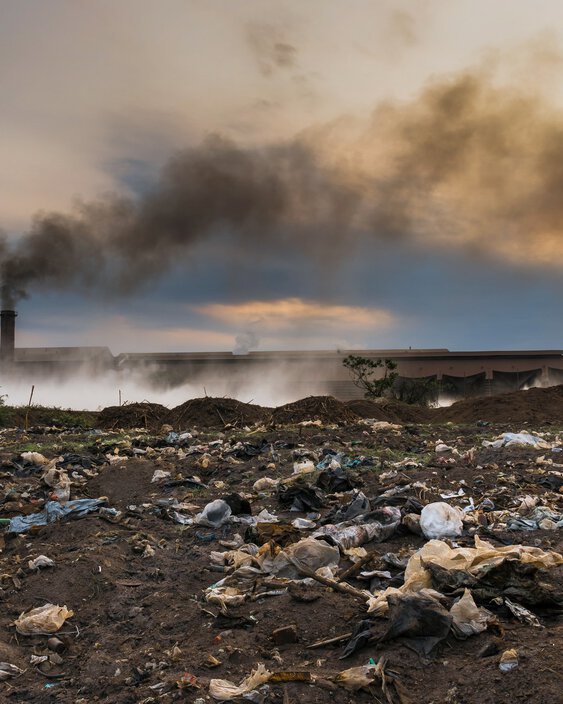
Pollution
An increase in air, water and soil contamination may cause more serious environmental damages and pollution claims.
Loading ...
Pollution can in general be described as an environmental change caused by natural or artificial input of contaminants. These may be responsible for harmful influences on the environment and various ecosystems. Pollution is not a phenomenon of modern industrialised societies but can be traced back throughout human history; it is part of the human footprint on Earth.
When we talk about pollution, we often think of air, water or soil pollution by physical or chemical substances. Other types of pollution are noise, heat, light or radiation. Pollution is typically classified as point source or non-point source pollution. When the source of pollution is identifiable, it is called point source pollution.
Air pollution
Examples of air pollutants are chlorofluorocarbons, carbon monoxide, carbon dioxide, or fine dust. A significant part of today's air pollution stems from motor vehicle and industry emissions. Some air pollutants are released by mining such as silica and asbestos. Asbestos is known to be one of the most expensive insurance claims in history as exposed workers may suffer from mesothelioma, a specific type of lung cancer.
Water pollution
Water contamination may occur naturally from washouts but nowadays results mainly from industrial wastewater, agricultural fertilisation (nitrates, pesticides), faeces, or rainfall washout of polluted air. The pollution of the oceans with plastics and microplastics and ways of combating it are currently the subject of intensive discussion. As water pollution may result in human health impairment via the food chain, this area is under special scrutiny from various parties.
Soil pollution
The same pollutants that contaminate water may contaminate soil, and consequently groundwater. A special form of soil pollution is contamination with radioactive substances. These may stem from mining but also from accidental release of radiation from nuclear power stations (e.g. Chernobyl, Fukushima).
Regulation and litigation
Severe pollution incidents helped to increase awareness and propelled regulation and litigation in this field.
- In the US the most important regulatory measures at the federal level are the Comprehensive Environmental Response, Compensation and Liability Act (CERCLA, commonly referred to as the Superfund Act), the Oil Pollution Act (OPA), and the Clean Water Act (CWA). CERCLA focuses on cleaning up already existing contamination. Polluters carry unlimited liability for ecological damage to flora and fauna. This liability is retroactive: that is, US operators are liable for damage that occurred before CERCLA came into force. Furthermore, the application of the legal concept of "joint and several liability" means that each one of several polluters is liable for the entire amount.
- In the EU national legislation was made uniform with the EU Maastricht Treaty of 1993. The Environmental Liability Directive 2004/35/EC (ELD) aims to ensure that businesses - based on the "polluter pays" principle - focus on the environmental effects of their activities by encouraging operators to avoid environmental damage. Every EU member state implemented the directive into national law. Environmental damage may be remedied in different ways depending on the type of damage. For damages affecting land and soil, the directive requires the area to be decontaminated to the extent that it does not expose human health to any serious risk. For damages affecting water or protected species and natural habitats, the directive aims at fully restoring the environment to its previous level for this purpose.
A tightening legal environment and adoption of US and/or EU regulation can be observed in a number of countries worldwide. While these changes push demand, existing accounts might be affected adversely if damages formerly not within the scope of insurance have to be covered retroactively. "Green thinking" will drive both insurance demand and loss activity. This particularly applies to countries where the sensitivity to environmental matters is still modest or low. It is likely that awareness among people and regulators will continue to increase and that new claim scenarios will emerge (e.g., microplastics). Mining and extraction activities in sparsely populated though vulnerable environments deserve special attention as well.
In addition to environmental policies, product liability, general liability, life & health insurance, and D&O covers may be affected by pollution claims.